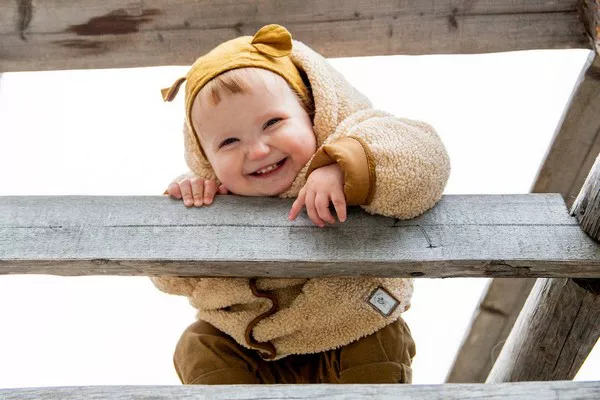Welcome to this informative guide on understanding the visual capabilities of a 10-week-old baby. As new parents or caregivers, it’s natural to be curious about your baby’s development, and their vision is a crucial aspect to explore. In this article, we will delve into the fascinating world of infant vision and answer the question: How far can a 10-week-old see?
The Basics of Infant Vision
At 10 weeks of age, a baby’s visual system is still in the early stages of development. Their ability to see and focus on objects is limited compared to older children or adults. To understand how far they can see, it’s essential to grasp a few fundamental aspects of infant vision.
Visual Acuity: Infants have relatively poor visual acuity, meaning they can’t see fine details clearly. Their vision is somewhat blurry, and they rely more on contrasting colors and shapes.
Color Vision: Babies at this age have limited color vision. They can see high-contrast colors like black and white more easily than subtle shades.
Visual Range
The range at which a 10-week-old can see clearly is quite limited. Typically, they can focus on objects that are approximately 8 to 15 inches away from their face. This is because their eye muscles are still developing, and they have difficulty coordinating their eye movements for long-distance vision.
Face Recognition: Babies often prefer looking at faces, especially those of their parents or caregivers. Holding your face within their visual range allows them to study your features and expressions.
Improving Visual Skills
While a 10-week-old’s vision may seem limited, it’s important to note that their visual skills are rapidly improving. Over the next few months, you’ll observe significant changes in their ability to see and interact with the world around them.
Tracking Objects: Babies begin to track moving objects with their eyes, which is a positive sign of their visual development. You can encourage this by gently moving a colorful toy within their visual range.
Reaching and Grabbing: As their hand-eye coordination develops, they will start reaching for objects they can see. Providing age-appropriate toys for them to explore is beneficial.
Visual Stimulation
To support your baby’s visual development, it’s essential to provide appropriate visual stimulation. Here are some tips:
High-Contrast Toys: Opt for toys with bold, high-contrast patterns and colors. These are more visually stimulating for infants.
Tummy Time: Encourage tummy time during wakeful periods. This helps babies strengthen their neck and upper body muscles, allowing them to explore their surroundings from a different perspective.
Regular Check-Ups
Lastly, it’s crucial to schedule regular check-ups with your pediatrician to monitor your baby’s overall development, including their vision. Any concerns about your baby’s vision should be discussed with a healthcare professional.
Conclusion
In conclusion, a 10-week-old baby’s vision is still developing, and their ability to see is somewhat limited compared to older children and adults. They can focus on objects within a range of approximately 8 to 15 inches, and their visual acuity is relatively poor. However, with time and appropriate visual stimulation, their vision will improve significantly. Remember to provide a variety of visually stimulating experiences for your baby and consult with a pediatrician if you have any concerns about their vision. Watching your baby’s visual development is a remarkable journey, and understanding their capabilities at this stage is a crucial part of being a caring and informed parent or caregiver.
FAQs about How Far Can a 10-Week-Old See
How Far Can a 10-Week-Old See?
At 10 weeks of age, a baby’s vision is still developing. Typically, they can see objects that are approximately 8 to 15 inches away from their face. Their visual acuity is limited, so they rely more on contrasting colors and shapes.
Why Is My Baby’s Vision Limited at This Age?
A 10-week-old baby’s vision is limited due to the early stage of their visual development. Their eye muscles are still developing, and they have difficulty coordinating their eye movements for long-distance vision.
What Can I Do to Help Improve My Baby’s Visual Development?
To support your baby’s visual development, you can:
Provide high-contrast toys and objects.
Engage in tummy time to help them strengthen their neck and upper body muscles.
Offer visually stimulating experiences, such as colorful mobiles.
Is It Normal for My Baby to Prefer Looking at Faces?
Yes, it’s entirely normal for babies to prefer looking at faces, especially those of their parents or caregivers. Holding your face within their visual range allows them to study your features and expressions, which is an essential part of social and emotional development.
When Will My Baby’s Vision Improve?
Over the next few months, you’ll observe significant improvements in your baby’s visual abilities. They will begin to track moving objects with their eyes, reach for objects they can see, and show more interest in their surroundings.
Should I Be Concerned About My Baby’s Vision at This Age?
In most cases, a 10-week-old’s limited vision is a normal part of their development. However, if you have specific concerns about your baby’s vision or notice any unusual behaviors, it’s advisable to consult with a pediatrician. Regular check-ups are essential to monitor your baby’s overall development, including their vision.
What Kind of Toys Are Best for My Baby’s Visual Stimulation?
Opt for toys with bold, high-contrast patterns and colors. These are more visually stimulating for infants. Mobiles with contrasting shapes and colors can also capture their attention.
Can I Do Anything to Encourage My Baby to Focus on Objects?
Yes, you can gently move a colorful toy or object within your baby’s visual range. As their eye-hand coordination improves, they may start to follow and focus on the moving object.


